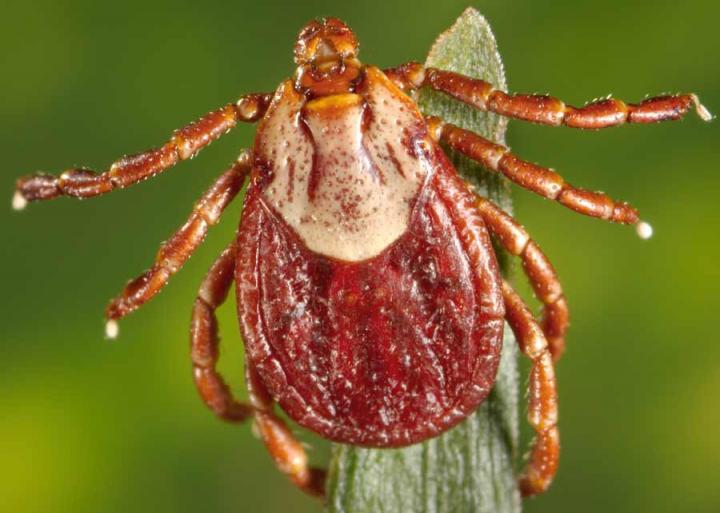“More ticks in more places” calls for national strategy

Annapolis, MD; August 10, 2015 – The Entomological Society of America (ESA) recently released a statement supporting the creation and implementation of a national strategy using Integrated Tick Management to better control tick populations and reduce the rapidly escalating impact of tick-borne diseases such as Rocky Mountain spotted fever, tularemia, and Lyme disease.
“The rapid rise in tick-borne diseases is a critical national issue,” said ESA President Phil Mulder. “A recent confluence of environmental, ecological, sociological, and human demographic factors has created a near ‘perfect storm,’ leading to more ticks in more places. Robust investment in training and research support for the existing and future generation of tick scientists is key to developing solutions that will relieve the escalating health and economic burdens caused by tick parasitism and tick-borne diseases in North America.”
The statement calls for policies and investments that strengthen tick research and research capabilities; foster education and training of professional entomologists as well as engagement of citizen-scientists; increase public awareness of tick-borne disease risk and prevention; and encourage dynamic partnerships between universities, industry, and government at all levels.
Specifically, it advocates for:
– Broad spectrum approaches, including the development and improvement of vaccines, repellents, attractants, and acaricides;
– Increased ecological surveillance and systems assessment, including tick surveys, evaluations of tick-borne disease risk and management strategies, and actions to suppress tick encounter rates and prevent disease;
– Local- and national-scale outreach and extension that enhances citizens’ knowledge of effective tick control and tick-bite prevention strategies;
– The creation of public-private partnerships that speed the translation of tick-control technologies and inventions into consumer products;
– Greater promotion of and investment in the field of tick expertise at the college level;
– Increased investments in international partnerships that deal with high priority accidental and intentional tick-disease introductions.
ESA applauds current federal efforts to understand and mitigate tick-borne diseases, and looks forward to further assisting with tackling this complex, critical issue. ESA believes that the profession of entomology is increasingly important to the welfare and progress of human society, and that professional entomologists possess the authority and responsibility to render effective service to humanity.
The ESA Position Statement on Tick-Borne Diseases is available at http://www.entsoc.org/ticks.
The Entomological Society of America is the largest organization in the world serving the professional and scientific needs of entomologists and people in related disciplines. Founded in 1889, ESA today has nearly 7,000 members affiliated with educational institutions, health agencies, private industry, and government. Members are researchers, teachers, extension educators, administrators, marketing representatives, research technicians, consultants, students, and hobbyists. For more information, visit http://www.entsoc.org.




















Is there a possibility that Lyme ticks are transported by cattle. And if so would it impact farmers, meat processers, consumers,etc?